Transforming how we move: Huawei’s Urban Rail Cloud Solution
Posted: 23 September 2020 | Huawei | No comments yet
On 18 August 2020, Shenzhen Metro Lines 6 and 10 were officially opened. They are the first to comprehensively apply Huawei’s Urban Rail Cloud Solution in China, as well as the first batch of metro lines with full 5G coverage in Shenzhen. They also create a record in the rail transportation industry to use artificial intelligence (AI), cloud computing and big data technologies to handle various metro service systems in an intelligent Horizon Digital Platform.
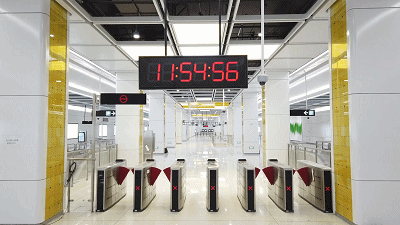

Line 6 of the Shenzhen Metro is 49.4km-long with 27 stations, starting at the Science Museum, then travelling through Futian, Luohu, Longhua, Guangming and Bao’an, before ending at Songgang Station. This line will not only greatly benefit public transport, but, most importantly, also benefit the development of the Guangming and Hualong Districts and will accelerate economic integration.
Shenzhen Metro Line 10 begins at Futian Port Station and passes through the central area of Futian and Meilinguan, along the central development axis to Banxuegang Science and Technology City. Line 10 is 29.31km-long, with 24 stations, and is the first line in Shenzhen that uses eight-carriage A-series trains in both northern and southern directions. It takes only 45 minutes to travel from Futian Port to Pinghu on Line 10, which relieves traffic from the Futian central area to Bantian. The line provides new access between Pinghu, Banxuegang, Huawei New City and Meilinguan East; promotes the development of the high-tech innovation area; and facilitates the construction of the Guangdong-Hong Kong-Macao Greater Bay Area.
Meilinguan Congestion is alleviated
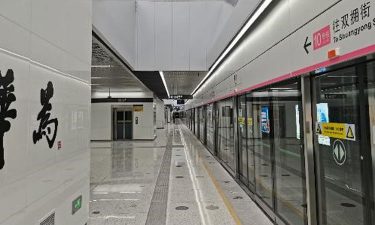

Huawei Station on Metro Line 10
Line 10 will effectively alleviate long-suffered heavy congestion, particularly during peak hours, in Meilinguan. A strong focus was given to the agility of the implemented technology, allowing the operator to maintain services even under the most challenging conditions.
Since planning began, Shenzhen Metro Line 10 has been entrusted with connecting the north and south of the city, sharing the pressure of existing metro lines and balancing the passenger traffic of the urban road network. Further optimisation and innovation are required in security and running efficiency to ensure that these goals can be fulfilled.
To address these challenges, Shenzhen Metro adopted Huawei’s industry-leading Urban Rail Cloud Solution, where cloud computing, big data, 5G and artificial intelligence (AI) are leveraged to build a unified, open and intelligent Horizon Digital Platform for urban rail. This not only provides comprehensive support for rail operations and management, but also brings a brand-new experience to the public.
What is the Urban Rail Cloud, and how can Huawei’s solution be applied to Metro Lines 6 and 10?
Urban Rail Cloud
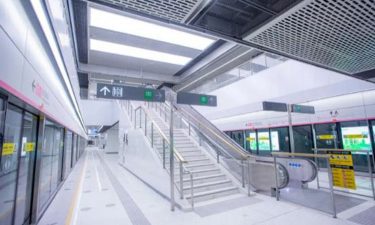

Inside Shenzhen Metro
Currently, urban rail transit in China is continuously expanding. In many cities, metro construction spans over a long period and, when completed, lines come into operation quickly. However, the opening of a new line increases difficulties in the operation and management of the entire metro network, posing great challenges to ICT infrastructure.
In a network-based environment, the service processes and operation rules need to be unified to standardise service management, thereby improving efficiency and reducing operations costs. In addition, it also requires the unified deployment of service applications and centralised data management. As for urban rail, it has become necessary to use emerging technologies to implement cloud-based and digital transformations.
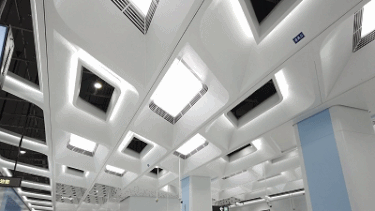

Huawei’s Urban Rail Cloud Solution in Shenzhen Metro Lines 6 and 10
Shenzhen Metro Lines 6 and 10 use Huawei’s industry-leading Urban Rail Cloud Solution. It is the first time that metro lines in China are using cloud computing and big data technologies to handle all service systems. This changes traditional silo-based vertical architecture and achieves the unified planning of ICT infrastructure resources, simultaneous construction, on-demand allocation and use and effective sharing. The Urban Rail Cloud lays a foundation for smart applications of Shenzhen Metro and invigorates future digital upgrades.


For example, with the implementation of the Urban Rail Cloud Solution, Shenzhen Metro now has the ability to support emerging service trends, such as passenger flow dispatching and predictive maintenance, through effective information integration. The operator can also focus more on building ICT-based systems without worrying about security. An integrated and unified service platform using cloud computing technology can bear the SCADA, backup ATS, PIS and security systems (including video surveillance and access control subsystems), as well as intelligent stabling yard and OA systems. The platform greatly reduces repeated investment and implements high integration and fast deployment of service systems, as well as simplifies O&M to improve efficiency.
The Urban Rail Cloud Solution enhances platform security by 80 per cent and IT resource utilisation to more than 50 per cent. The platform provisions resources in a unified manner to improve operations and management efficiency. For service deployment, it adopts typical stations as templates and also replication technology to deploy real-time server services for 20 stations within 30 minutes.
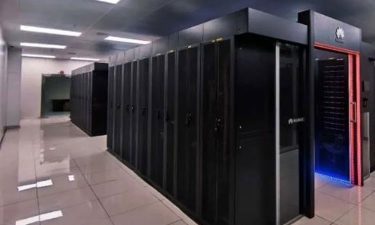

Shenzhen Metro Lines 6 and 10 have built a new cloud architecture for future rail transportation systems, achieving highly reliable transportation, efficient operations and centralised O&M.
First batch of metros applying cloud computing in China
With the support of cloud computing and big data technologies, Shenzhen Metro Lines 6 and 10 properly optimise service application systems to integrate various information resources. In addition, enhanced integration between subsystems and collaboration between service departments implementing information-based management and centralised control throughout the operations process effectively eliminates information and automation silos.
Based on the Urban Rail Cloud platform and HUAWEI CLOUD FusionInsight capabilities, Shenzhen Metro builds a big data analysis platform to support line-level data analysis, involving device health, energy consumption management, passenger flow statistics, line centre-level monitoring, emergency decision-making and image-based fire analysis. Huawei also cooperates with ecosystem partners to provide basic platform support for intelligent applications, such as intelligent linkage and big data analysis.
The Urban Rail Cloud uses the big data platform to integrate heterogeneous data resources and mobilise data assets. Users enjoy comprehensive visualisation on one map, where one click provides global awareness, and operations are linked and integrated.
Unprecedented 5G travel experience
Shenzhen Metro Lines 6 and 10 are the first metro lines with full 5G coverage in Shenzhen, enabling passengers to use the 5G network anywhere.
In the past, passengers used 4G networks and, when faced with heavy traffic, network capacity was insufficient, which deteriorated user experience. At times, even messages could not be sent. In contrast, the 5G network has a higher bandwidth and network capacity and supports the smooth access of smart terminals to the Internet.
Whether passengers are in the station hall or in a busy queue, they can use the 5G network stably.
Through the joint efforts of Shenzhen Metro, Huawei and the three major carriers, it took only 10 weeks to complete the installation and commissioning of devices at stations, halls and tunnel sites, achieving the full coverage of 5G networks. In the future, we will be able to experience ubiquitous 5G services.
Looking forward to the future
On top of providing passengers with a unique Internet access experience, the 5G network can also benefit metro construction, production, operations and management.
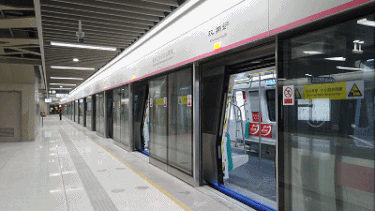

In conclusion, 5G technology enablement is revolutionising the metro network. It is closely combined with the urban rail cloud solution to help reduce costs, improve efficiency, enhance operational security and reliability and eliminate potential risks in a timely manner. In the near future, 5G technologies will be increasingly integrated into the metro system to make travel more convenient, secure and comfortable.
The innovative breakthrough of Shenzhen Metro Lines 6 and 10 bridges multiple gaps in rail transportation construction. Cloud computing, big data, 5G and AI are used to promote interaction and integration between rail transportation and city functions. The two lines bring a better travel experience, stimulate urban creativity and empower technology-based smart metros.
Emerging ICT technologies – in particular, cloud computing, big data and AI – drive today’s technological revolution and promote high-quality economic and social development.
China’s urban rail industry has successfully implemented cloud computing, delivering an innovative set of urban rail cloud applications. Cloud-based urban rail services have gradually evolved from a single domain to multiple ones. Customers have also increasingly realised the value of these applications. Urban Rail Cloud is being deployed and promoted in both cities with existing large-scale multi-line networks – such as Beijing, Shanghai, Guangzhou, Shenzhen and Wuhan – as well as those only starting to build metro lines – for example, Hohhot and Taiyuan.
Using the Urban Rail Cloud platform, Huawei’s Smart Urban Rail Solution streamlines the production, management and service subsystems of urban rails and fully integrates service data. At the same time, cloud computing and big data technologies support the rapid development of urban rail transit. To date, over 170 urban rail lines in more than 70 cities around the world have implemented the solution.
In addition, Huawei actively participates in the formulation of urban rail informatisation standards in China, leads multiple standards teams and promotes urban rail cloud technologies going global.
HUAWEI CONNECT
More solutions to facilitate the irresistible digital transformation across various industries are set to be discussed in the fifth HUAWEI CONNECT, scheduled from 23 to 26 September 2020 in Shanghai. Participants include global thought leaders, business elites, tech experts, pioneering enterprises, ecosystem partners, application service providers and developers who will share their thoughts on the industrial landscape amid such an important evolution.
During this annual event, Huawei will demonstrate its cutting-edge technologies, plus a wide range of renowned products and solutions. It will, as well, explore successful practices for the transformation, with the target to establish an open and mutually beneficial industry ecosystem for the best interests of partners and customers.
Related topics
5G, Artificial Intelligence (AI), Big Data, Technology & Software








